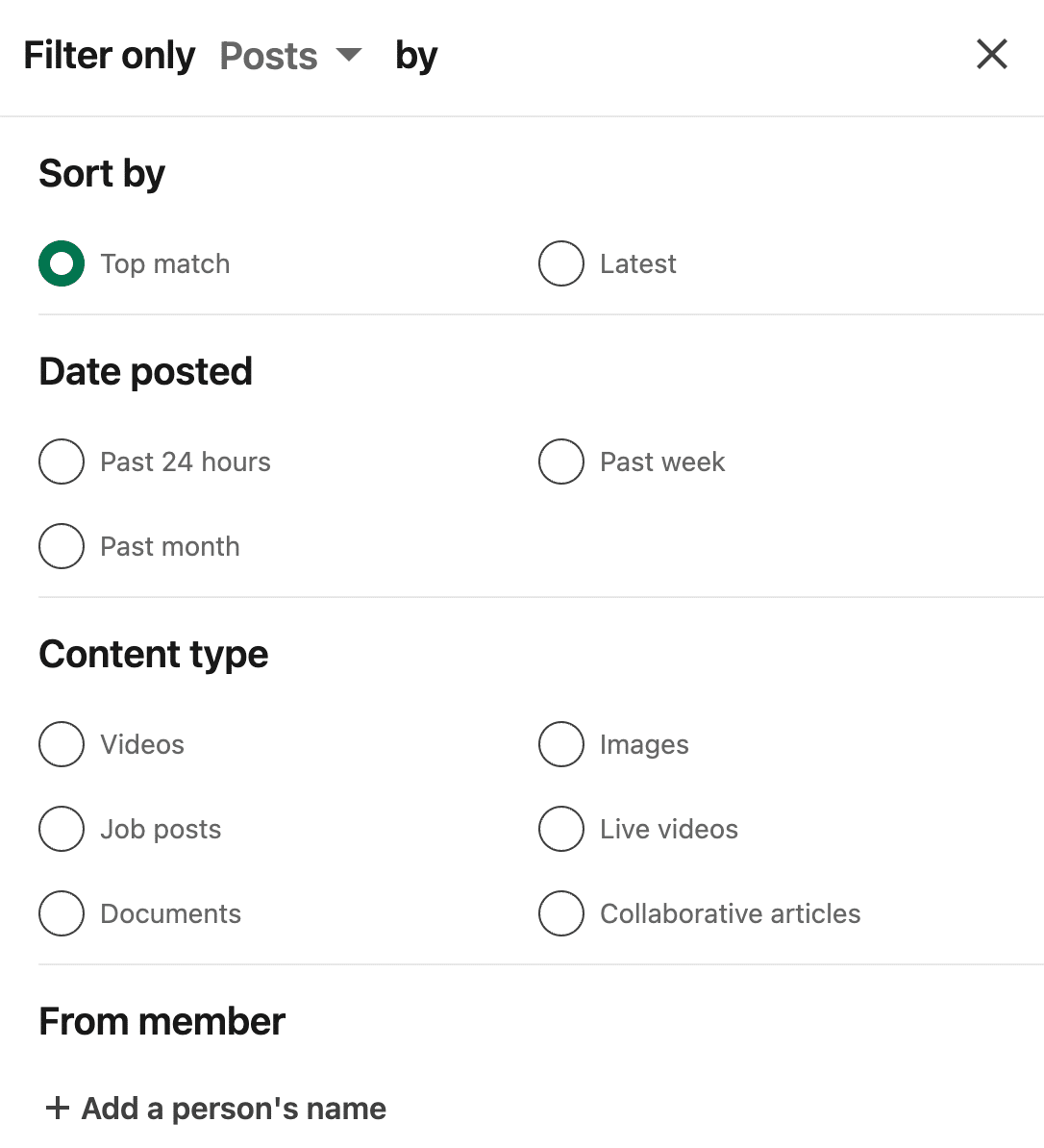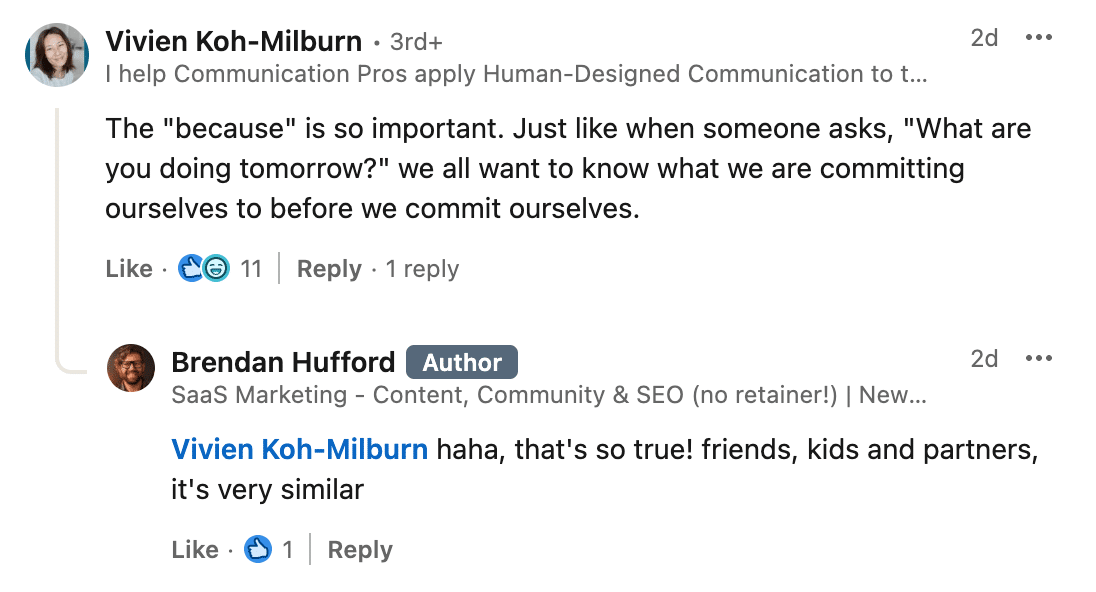
LinkedIn Comments: A True Game Changer for Your Marketing
Creating interesting content for LinkedIn on a regular basis takes time. But what if you don’t have that time right now? Then there is another way to do successful LinkedIn marketing: Smart, strategically placed comments not only increase your visibility, but also demonstrate your expertise in relevant subject areas, and with comparatively little effort.
However, a simple “Great post!” or a thumbs-up emoji is not enough. You need a comment strategy.
In this article you will learn
- why LinkedIn comments are a real reach weapon,
- which commenting techniques really work and
- how you can measure and optimize the effectiveness of your strategy.
Why LinkedIn comments are so valuable
Comments are seen by the author of a post, their network and your community in their LinkedIn feed. The more successful the post, the greater the reach of your comment.
The advantages:
- Less effort: Instead of having to find and create new content, you build on existing discussions.
- More visibility: If you don’t have time to publish LinkedIn posts regularly, your posts will quickly get lost in the crowd. With comments, you benefit from the visibility of others.
- Targeted networking: You interact with relevant people from your industry and ideally arouse their interest.
- More interaction: Comments often stimulate responses and further discussions. It’s not just the LinkedIn algorithm that likes this. It also gives you even more visibility.
But not every comment has this effect – it depends on how you comment.
The right strategy: How to use comments in a targeted way
Not every comment automatically gives you visibility or strengthens your expertise. For your strategy to work, you need to select the right posts and write well thought-out, relevant comments.
Here’s how this works in detail:
Find suitable posts
A comment only has an impact if it appears in the right place. Pay particular attention to these factors:
- High reach: Posts from LinkedIn influencers or much-discussed topics often have a large readership.
- Relevance to your target group: Comment on posts that are interesting for your network and potential customers.
- Timeliness: New posts get more attention: It’s best to comment within the first few hours of publication. If a post has hardly any interaction yet, you can stand out with a high-quality comment. Otherwise there is also a risk that someone else has already made your point.
Tip: Use the LinkedIn search function to search specifically for relevant content in your industry. If you go to “All filters”, you can search for posts that have been published in the last 24 hours, for example.

How to write comments that really stand out
Quickly adding a “Great post!” or “Totally agree” under a post? That’s of little use. Successful comments are characterized by the following features, for example:
- They add their own perspective to the post. Example: “Exciting point! I have found that [my own observation] also plays a major role here.”

- They encourage discussion. Example: “What do you think, can this trend prevail in the long term or is it just a short-term development?”

- They provide added value. Example: “There is an exciting study on this topic by [source], which shows that …”
Best practices for strong comments:
- Length: not too short and not too long is just right. It’s better to comment with two or three well thought-out sentences than with a phrase.
- Tonality: Write casually and professionally, the way you would formulate a good LinkedIn post.
- Structure: Formulate one clear thought per comment. Paragraphs make for better readability.
- Storytelling elements: Personal experiences or anecdotes make your comment more lively.
If you comment often, develop your own “voice” that is recognizable. This strengthens your personal brand on LinkedIn.
You should avoid these mistakes
We’ve already mentioned it: not every comment is a good comment. Some strategies come to nothing or even do harm.
For example, avoid the following:
- Writing comments that are too long: A detailed comment can be valuable, but text that is too long often puts people off. If your comment looks like its own mini-article, many people will just skim it or ignore it. It may even be perceived as annoying.
- Contributing nothing to the discussion: A comment like “Great post!” or “Great article, thanks!” may be nice, but it gets lost in the crowd and doesn’t leave a lasting impression. Of course, you can still comment like this from time to time to show appreciation for the author of a post. You just shouldn’t expect too much from it.
- Commenting too promotionally: Anyone who advertises their own services or products under every post is quickly perceived as dubious.
- Inappropriate humor: Irony and sarcasm often work less well in written text than in direct communication. This can quickly lead to misunderstandings that can damage your reputation.
Measure and optimize: How to evaluate your comment strategy
You don’t have to drive on sight when commenting. You can check whether your comment strategy is successful.
Pay attention to the following, for example:
- Reactions (likes, hearts, applause, etc.): They show whether your comment is being well received.
- Replies to your comment: The more replies, the better – this signals genuine interaction.
- Profile visits: Increased profile views after a comment are a good sign that you have generated attention.
- New contact requests or followers: Do others want to network with you after commenting? This is a good indicator that your comment has generated interest.
Tip: Observe which type of comment triggers interaction particularly often. From this, you can derive valuable learnings for your future strategy and get more and more out of your comments.
Use LinkedIn analytics for comments
LinkedIn has recently even started offering insights into comments:
- Open your LinkedIn profile.
- Go to the “Activities ‘ tab and select ’Comments ”.
- Here you can see how your comments are performing.

If you are pursuing a larger strategy, it is worth recording the data regularly in a spreadsheet or tracking tool. If you use the above-mentioned method, it will quickly become confusing if you comment a lot.
Test and optimize: How to get the most out of your comments
To be successful in the long term, you should constantly adapt your comment strategy. Test different approaches:
- Try out different commenting styles: Ask more questions? Or would you prefer to write informative additions?
- Compare post types: Do you get more interaction with surveys, opinion pieces or specialist articles?
- Optimize timing: Comment at different times of day and analyze when your network is most active.
In the end, consistency is the key. If you regularly write clever comments, you will be perceived as an expert in the long term. You will expand your network and ideally even gain new leads.
Comments are an important part of LinkedIn marketing
LinkedIn is becoming an increasingly important marketing channel for companies. The activity of decision-makers plays a central role in this, as individuals gain more visibility than companies.
Under these conditions, LinkedIn comments have great potential. If you get it right, you can achieve more reach and attention with their help and establish yourself or your own brand as an expert. The right comment strategy is crucial. This means selecting posts specifically, writing high-quality comments and optimizing your own strategy in the long term. Oh yes, and you shouldn’t neglect posting completely either.
Whether LinkedIn, Instagram or TikTok, with Swat.io you always stay on top of things. Start a free trial now and convince yourself of our social media tool!
 08. April 2025
08. April 2025 








